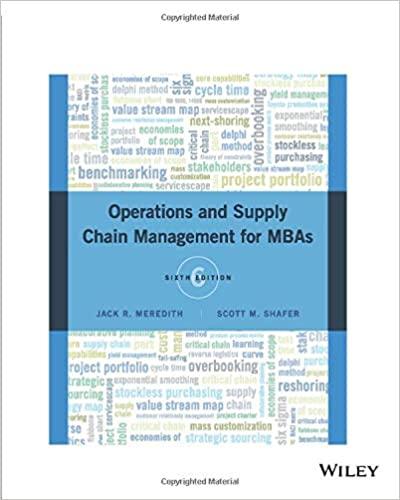Question
PQ problem: LCB-Balsa, Inc. produces two models of toy airplanes, for which the relevant data are summarized below: All data are per unit of product
- PQ problem: LCB-Balsa, Inc. produces two models of toy airplanes, for which the relevant data are summarized below:
| All data are per unit of product | Toy Airplane P | Toy Airplane Q |
| Selling price | 52 $/unit | 44 $/unit |
| Labor required | 0.5 hour/unit | 1 hour/unit |
| Machining time required | 1.5 hour/unit | 0.8 hour/unit |
| Raw material required per unit | 2 bf/unit | 1 bf/unit |
| Maximum weekly demand | 160 units | 100 units |
Each week, up to 350 board feet (bf) of raw material is available at a cost of $5/bf. The company employees five workers, who work 40 hours per week for a total regular-time labor supply of 200 hours per week. They work regardless of production volumes so their salaries are treated as a fixed cost; the wage rate is 10$/hour, per worker (production is in a foreign country so rates are converted into US $). There are 400 hours per week of machining time available (if useful, you can think that each worker can operate two machines concurrently). The relevant weekly operating cost for 400 hours of machine time is only 2000$, corresponding to a low cost rate = 5 $/hour of machine time (most machines are old and paid for).
- Bottleneck: Which resource labor, machine time, raw material is the bottleneck? Explain by showing relevant calculations / approach used or explain the logic.
- Prioritization and Production Plan: Considering the most-restrictive (bottleneck) resource, calculate the bottleneck ratio = unit profit per unit of bottleneck resource consumed and identify which product will receive highest priority. Determine the production plan and the resulting weekly net profit corresponding to the bottleneck ratio approach.
- Resource Addition: Suppose it is possible to procure extra resources (labor, machine time, material) each week at a 50% price premium what normally costs 10$ (5$) will cost 15$ (7.5$). Would you procure extra resources each week, how much of which resources, why or why not?
Step by Step Solution
There are 3 Steps involved in it
Step: 1

Get Instant Access to Expert-Tailored Solutions
See step-by-step solutions with expert insights and AI powered tools for academic success
Step: 2

Step: 3

Ace Your Homework with AI
Get the answers you need in no time with our AI-driven, step-by-step assistance
Get Started


